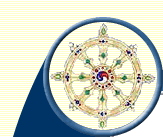Daiily Program Calendar in Kathmandu for Summer 2010 (Subject to Change)
Students will be exposed to various aspects of the life of the Bagmati River basin through lectures, field visits, hands-on community projects, and nature hikes.
• Environment and conservation
• Arts, culture, myths, and legends
• Sustainable development (e.g., micro credit program; eco-tourism)
• Environment and health (e.g., water quality testing, water borne illness)
• Sustainable technologies to promote environmental conservation (e.g., briquet making from recycled materials; smokeless stove;compost toilet; rain, solar, wind, and cloud harvesting)
• Community participation and grass-roots organizations
Day 1
Arriving in Kathmandu and hotel transfer. |
|
Day 2 Theme: Overall introduction
Morning: Orientation will cover Nepal's religion, culture, history, customs, politics, environment, and geography. Also, students will be briefed on necessary health precautions.
Instructor: KU faculty
Afternoon Field Trip: Visit Durbar Square and The Living Goddess and eat lunch. |
|
Day 3
Theme: Environment, conservation & sustainable technologies
Morning: Lecture on environment, conservation, recycling, and biology of Bagmati River; role of sustainable technologies (recycling garbage, compost toilets, community waste management).
Instructor: KU faculty
Afternoon Field Trip: Visit some NGOs to learn about the water purification and/or waste disposal and/or recyling efforts and related sustainable technologies (e.g., a possible site is Foundation for Sustainable Technologies (FOST).
Resources: >>Environment Management of the Bagmati River Basin; >>Ancient Newari Water-Supply Systems in Nepal's Kathmandu Valley, Jonathan C. Spodek, APT Bulletin, Vol. 33, No. 2/3. (2002), pp. 65-69 (available on Jstor); >>Community Participation in Solid Waste Management in Patan; >>MIT Nepal Water Project; >>FOST video: recycling, energy conservation, and sustainable technhologies;
>>cloud harvesting; >>Eco-system monitoring:UNM-BEMP; >>solar "tuki" (lamp)
|
|
Day 4
Theme: Culture and arts; water architecture Morning:
Mythology, arts and culture of the Bagmati River basin
Instructor: KU faculty
Afternoon Field Trip: Visit the Patan Durbar Musuem and ancient water spouts
Resources: >>Manjushree and Birth of the Valley; >>Carved water spouts; >>About Water Spouts; >>Manjushree Cave and the legend of Kathmandu Valley; >>God, Myths and religion; >>Manjushree: the God of Wisdonm and creator of Kathmandu Valley
Video Clips (YouTube): >>A singing devotee; >>Cremation |
|
Day 5 Theme: eco-hike; water sample collection 1
Day Field Trip : Exploration of the origin of the Holy Bagmati River; a short trek to Sundarijal in the northern hilly part of the valley and trek up to the water reservoir. (water sample collection and study ecosystem);
Lunch at SundariJal town.
Resources: >>Sundarijal Hilly Town and images
|
|
Day 6 Theme: Environment, people, and culture; water sample collection 2
Day Field Trip : Exploration of the middle Bagmati (holy religious site of Pashupati Temple) and an old-age santuary; (water sample collection and study ecosystem)
Visit a nearby world heritage class hotel-cum-museum Dwarika for snack/light lunch, and visit Buddhist Stupa Boudhanath.
Resources: Read a 59-year Cherokee Dave Baldridge's expeprience with the elders on the banks of Kathmandu’s Bagmati.
|
|
Day 7 Theme: sustainable development --micro credit program for women
Day Field Trip: Learn about the sustainable development theme (site visit and lecture: kiva.org's micro credit program for women)
Sponsor: Patan Business and Professional Women (BPW Patan); in nearby two villages: Chapagaun or Thecho
THECHO , 8km south of Patan, is the largest town in this end of the valley, while CHAPAGAUN , 1km further south, is a smaller but similarly brick-built settlement. Thecho has a touch more atmosphere, Chapagaun more to eat.
More attractive than either town, the seventeenth-century Bajra Barahi Mandir is secreted in a small wood 500m east along a track from Chapagaun. Despite Shiva imagery, the temple is dedicated to a tantric manifestation of the goddess Kali: like the Bajra Joginis, Bajra Barahis represent the female, creative power of divinity. This goddess receives her share of worship and sacrifice on Saturdays, but most visitors come just to picnic in the park. The stone statue of Bajra Barahi kept in the sanctum is a recent replacement for an ancient image that was stolen; the stolen image was later recovered and is now on display at the National Museum.
Resources: Kiva.org and Patan Business Professional Women
|
|
Day 8 Theme: Eco-hike, cultural exploration; water sample collection 3
Day Field Trip: Exploration of the lower Bagmati: hiking around the Chobhar gorge, visit temples, and eat lunch at Gomba and Sculpture Garden (water sample collection and study ecosystem)
Resources: >>Chobhar Monastery; >>Chochar Jal Binayak Temple; >>Chobhar GaneshTemple |
|
Day 9 Theme: Environment and health; water analysis of samples 1, 2 and 3
Morning: environment and health linkages; water borne bacteria; water sample lab analysis; water related health epidemic on the Bagmati basin.
Instructor: KU faculty
Afternoon Field Trip: Nick Simons Institute to learn about the water borne illness, Nepali health infrastructure, telehealth/community health, and healthcare manpower development.
Resources: >>Gift of Life, A New Yorker’s Generosity; >>Nick Simons Institute; >>Environment and Public Health Otrganization; >> UNM's Center for Telehealth and Cybermedicine Research |
|
Day 10 Theme: Grass-roosts involvement in environmental preservation of the river basin
Day Field Trip: Interaction with grass roots organizations and community participation; field visit of the river with Friends of the Bagmaati (tour of a carpet factory and observe the color dying process, industrial dumping, sewer dumping).
Lunch at the old Rana Palace: Babar Mahal Café and Art Gallery.
Resources: >>Article about the Rana Renascence and Babar Mahal |
|
Day 11 Theme: Images of Kathmandu
Break: Explore Kathmandu
Resources: >>Images of Kathmansu; >>Short Descriptions of Things to Do, Or explore the web resources
|
|
Day 12 Theme: Eco-tourism; comparing urban and rulal living
Day Field Trip: Visit a rural village at the outskirts of Kathmandu (e.g, Lamatar or Changunarayan or Melamchi) and experience Nepali village life and enjoy local Newari cuisine for lunch.
Resources: >>Melamchi Valley: >>Water controversy; >>Changunarayan photo album
|
|
Day 13 Theme: Putting it all together
Morning: Round table discussion and synthesis: the Bagmati versus the Rio Grande
Afternoon Field Trip: Students decide an outing program. |
|
Day 14
Field trip ends. Namaste! |
|
|
